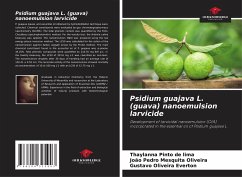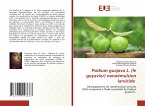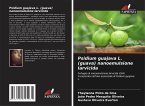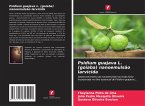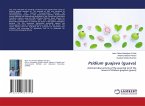P. guajava leaves and essential oil obtained by hydrodistillation technique were collected. Chemical constituents were evaluated by gas chromatography-mass spectrometry (GC/MS). The total phenolic content was quantified by the Folin-Ciocalteau spectrophotometric method. For the toxicity test, the Artemia salina bioassay was applied. The nanoemulsion (W/A) was prepared using the low energy phase inversion method. The LC50 was calculated for the action of the nanoemulsion against Aedes aegypti larvae by the Probit method. The main chemical constituent found in the essential oil of P. guajava was -pinene 34.25%. Total phenolic compounds were quantified as 210.35 mg EAT g-1. In the toxicity bioassay, the LC50 of 323.6 mg L-1 was classified as non-toxic. The nanoemulsion droplets after 30 days of handling had an average size of 120.41 ± 0.55 nm. The larvicidal activity of the nanoemulsion showed mortality at concentrations of 10 to 100 mg L-1 with an LC50 of 12.75 mg L-1.
Bitte wählen Sie Ihr Anliegen aus.
Rechnungen
Retourenschein anfordern
Bestellstatus
Storno

